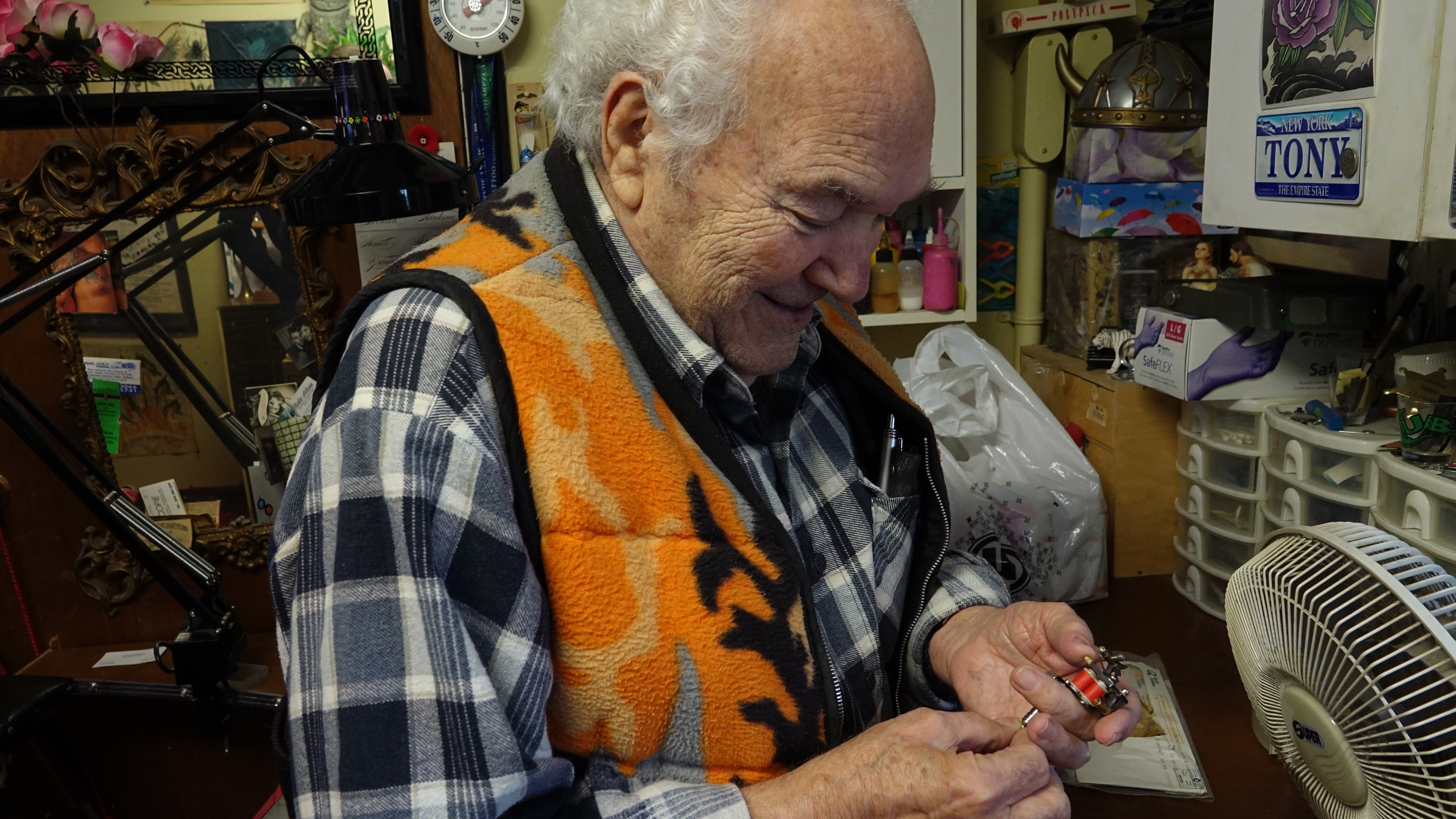Every day, Tony D’Annessa walks from his home across the street to his tattoo shop.
He hangs around, watching television and spending time with his fellow — though much younger — tattoo artists to the tune of buzzing needles and black metal music.
He doesn’t take appointments, but if someone walks in asking the 83-year-old for a tattoo, he’ll oblige.
“People want the old style,” he says. “It’s always been popular.”
After 60 years in the business, D'Annessa is referred to as “Tattoo Tony" and he believes he's the oldest working tattoo artist in Canada.
He works at Tatouage Pointe-Saint-Charles on Centre Street in Montreal’s Southwest borough, a shop he founded in the 1970s.

About a dozen traditional-style tattoos adorn his arms. He got them done in the 1950s, when he first started his practice — but he hasn’t gotten any new ones since.
“When you get to be my age, that’s what your tattoo’s going to look like,” he says, pinching and stretching the faded ink on his skin.
“All your colour’s going to fade, your skin gets very tender, and your body starts absorbing that black ink.”
D’Annessa’s first time tattooing was in the summer of 1958. His friend needed some help at a shop in upstate New York, and since D’Annessa was in art school for portrait drawing, he figured he fit the bill.
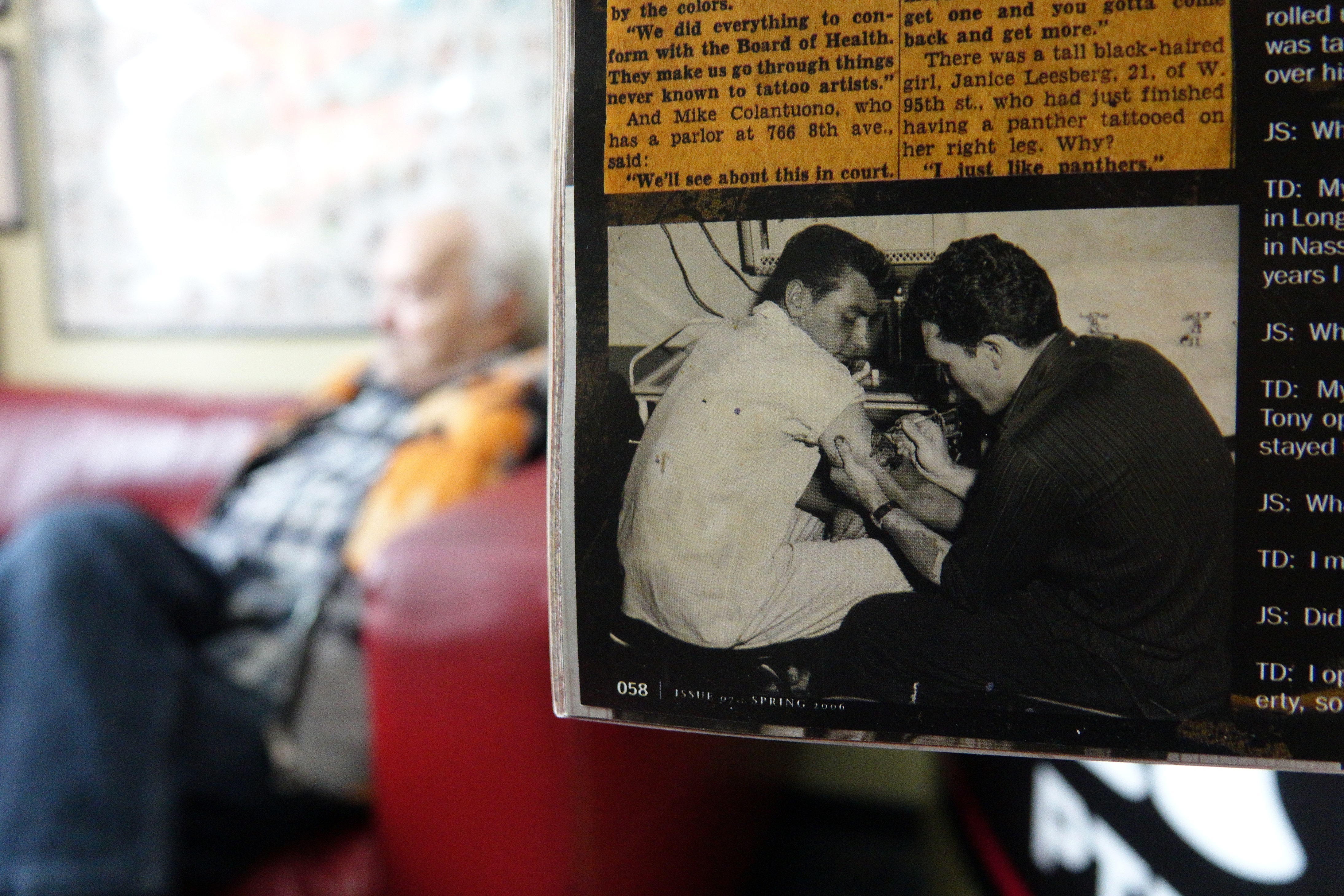
Someone walked in, and he promptly tattooed a panther on his right bicep.
“I had never tattooed anybody before I tattooed that guy,” says D’Annessa, who was in his 20s at the time.
Later that year, he opened a shop in Midtown Manhattan, only to have it closed down after receiving a letter announcing the prohibition of tattoos in New York City — a ban that was only lifted in the 1990s.
The ban came into place in the early 1960s. Tony got a notice saying he would have to close down because tattoos could spread viruses like hepatitis. Some theorized the actual reason for the ban was to “clean up” the city before the 1964 New York World’s Fair.
For the next few years, D’Annessa made clandestine tattoo appointments in apartments, hotel rooms and other locations to avoid Johnny Law.
That’s when he started carrying around his flash designs, which are a selection of drawings by a tattoo artist that clients can choose from, as opposed to custom requests. He still uses those same designs today.
The old-school panther and skull designs are displayed at Tatouage Pointe-Saint-Charles. D’Annessa rarely draws commissioned tattoo designs anymore.
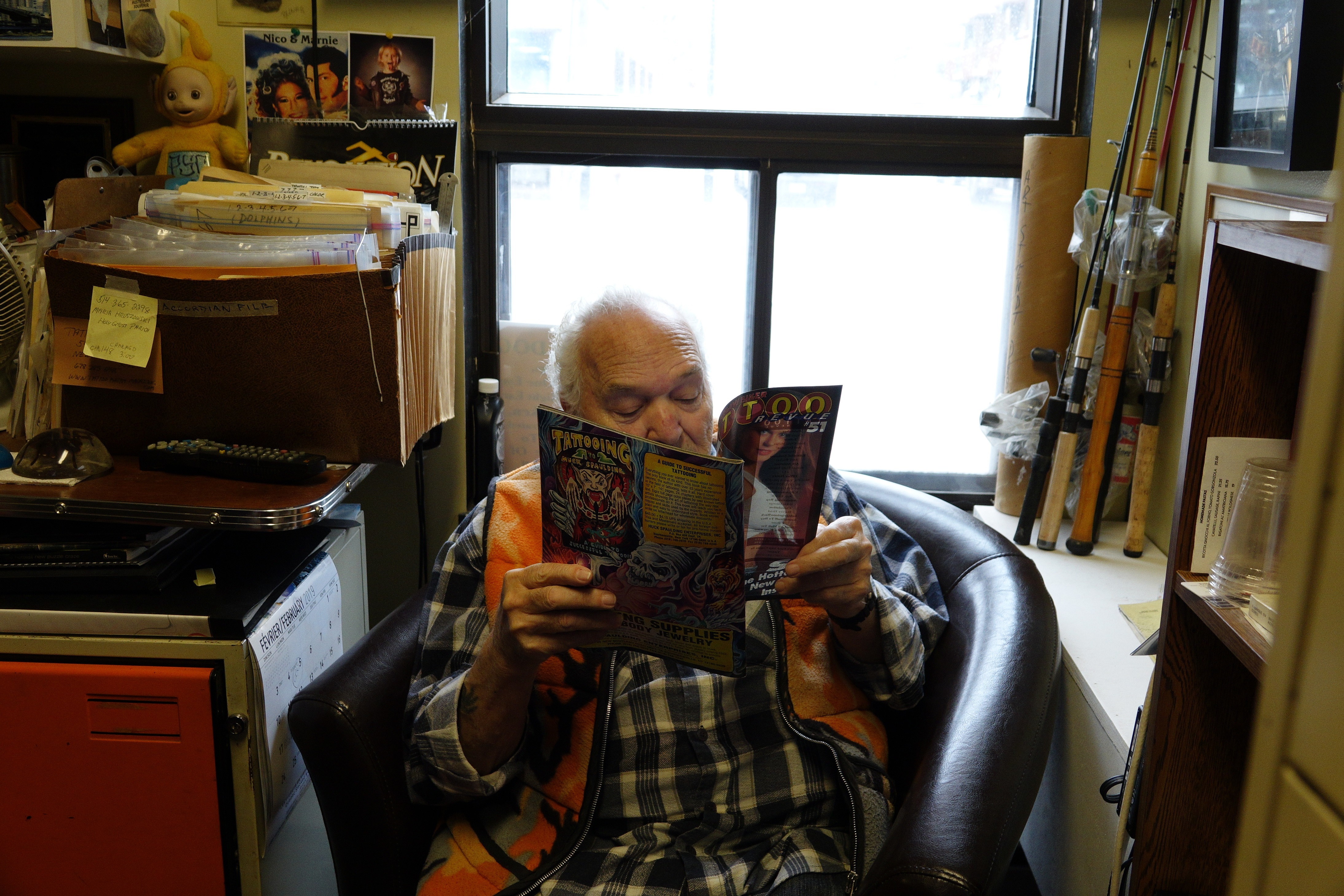
In the 1960s, D’Annessa met his wife, Lorraine, who was visiting New York from Montreal. They quickly fell in love, and he followed her back to Canada some years later.
D’Annessa and his brother-in-law started Tatouage Pointe-Saint-Charles in 1976, in a building two shops down from its current location.
At one point early on, D’Annessa says, his was the only tattoo shop open in Montreal, after a shop on St-Laurent Boulevard closed.
“As [tattoos] started to get popular, shops started to open everywhere,” he says.
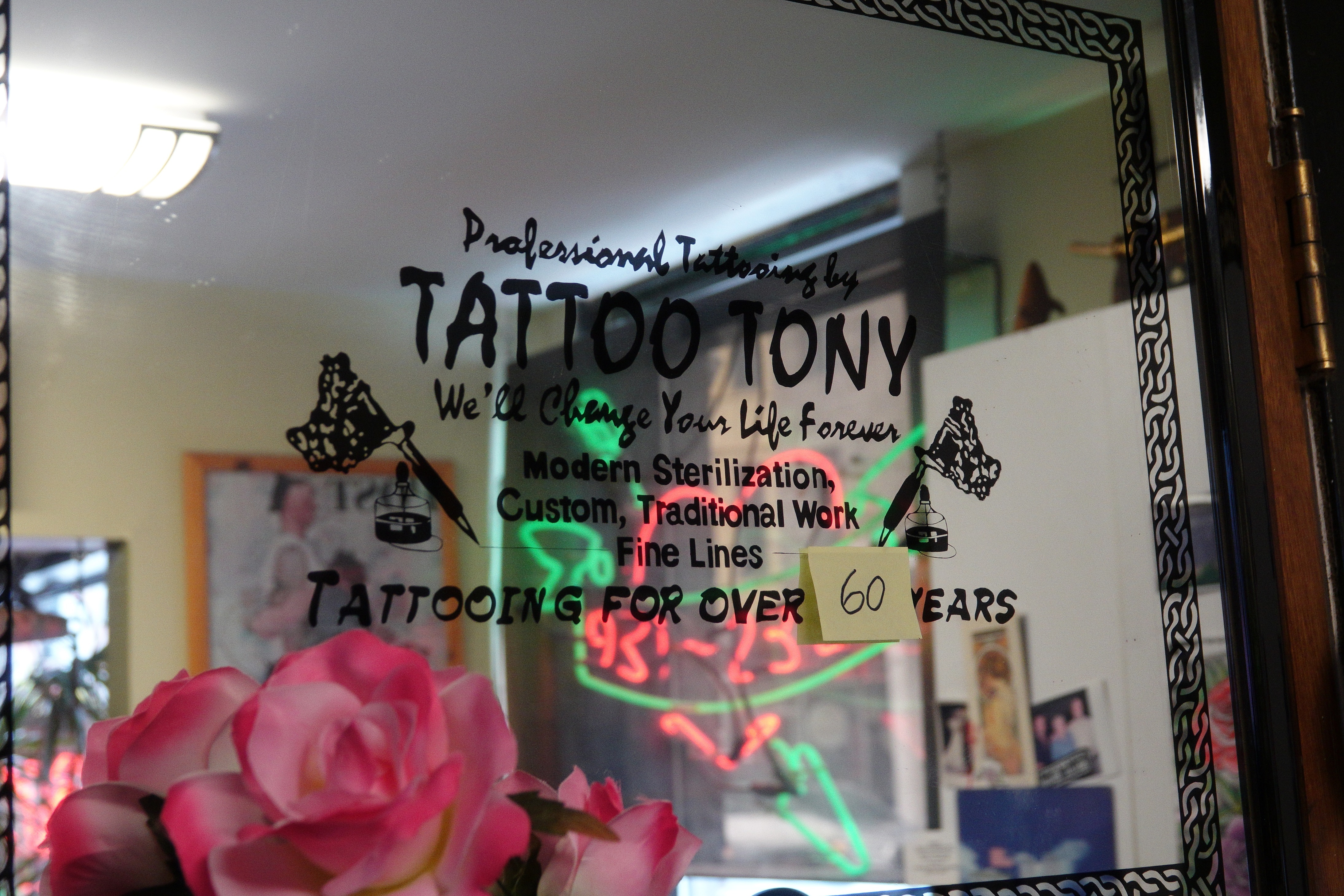
'A piece of tattoo history'
Today, there dozens of tattoo parlours in the Montreal area.
One of them is Ligne Verte in Hochelaga—Maisonneuve. Mathias Fortier is a 23-year-old tattoo artist who’s been working there about a year.
He says without trailblazers like D’Annessa, he and his colleagues wouldn’t be tattoo artists today.
“Everything we do is inspired by what that guy did in his career,” Fortier says. “It’s tradition, it’s history, it’s important. It’s not just tattooing for us.”
A few months ago, Fortier went to get a tattoo from D’Annessa himself — a demon’s head with wings on each side, placed on his leg.
“It’s like having a piece of tattoo history on you.”
The experience was like none other, Fortier says.
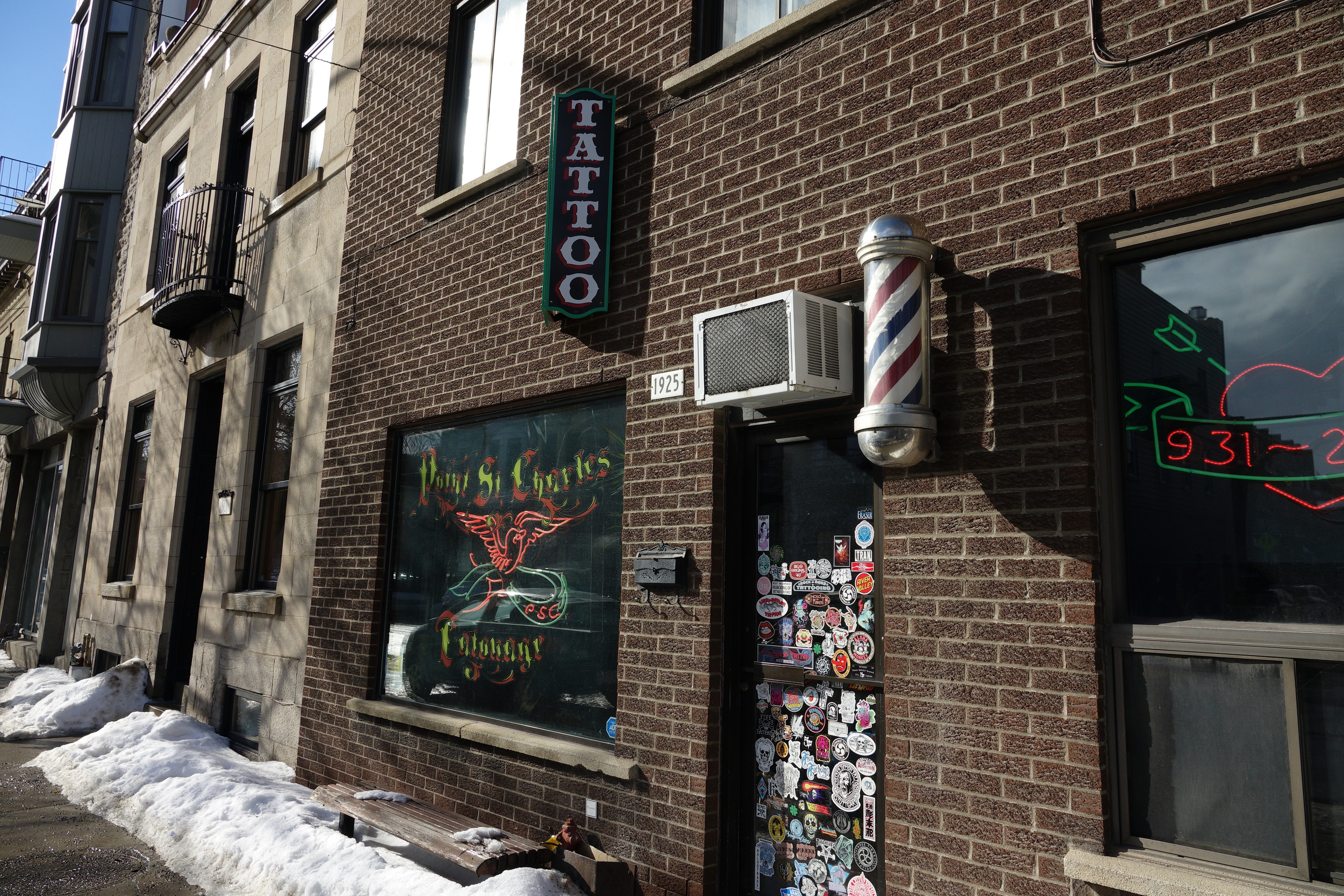
D’Annessa told him anecdotes from his decades-long career and life in the industry. But the best part? The flash design Fortier chose, one of D’Annessa’s from the 1950s, had never been tattooed on anyone before.
When Fortier started tattooing, he was passionate. He wanted to start doing it right away, and had a very short apprenticeship before becoming a full-time tattoo artist at Ligne Verte.
“I wasn’t going to wait for someone to show me. I wanted to be a part of that world."
D’Annessa says he doesn’t believe in apprenticeships — he’s never even had an apprentice.
“If you’re going to tattoo, you’re going to tattoo,” he says. “There’s no way I can teach you how to do that. If you’re doing it on the skin, you can’t do that and erase it.”

When he started tattooing, D’Annessa thought it would be easy. But every artist is going to make a mistake sometime, he says.
“It wasn’t that easy,” he says, chuckling. “You [can’t] make mistakes … like when you want to make a straight line, and [the] guy moves. You can’t straighten that line out.”
Mistakes are a part of life, and a part of aging.
D’Annessa says even though tattooing gets harder as he gets older, it’s not a career someone retires from.
He adds that he stays young by spending time with younger people — and by ignoring his birthdays.
“I’m 49,” he laughs. “If you feel old, you’re going to be old.”
D’Annessa says it’s simple — he’s kept going so long because he likes doing it.
“To me, it’s an art.”
